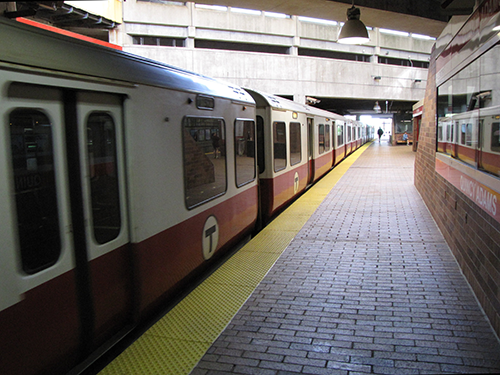Jun 01 2015 New Balance and MBTA collaborate to build commuter rail station
 In the United States today, it’s easy to assume that major infrastructure projects will be spearheaded and funded by the government. But with the public sector struggling with the demands of transportation upkeep and often unable to set aside funding for new projects, collaboration with the private sector can provide resources to ensure that crucial projects can be carried out.
In the United States today, it’s easy to assume that major infrastructure projects will be spearheaded and funded by the government. But with the public sector struggling with the demands of transportation upkeep and often unable to set aside funding for new projects, collaboration with the private sector can provide resources to ensure that crucial projects can be carried out.
This type of collaboration is not without precedent — some of the first infrastructure projects in the United States, including the New York City subway, were built by the private sector. But once the public sector began investing money in these projects, the private sector took a step back.
The newest example of this type of collaboration in the United States, profiled in The Atlantic this month, is between New Balance and the Massachusetts Bay Transportation Authority (MBTA), with New Balance building its own commuter rail station. When the company decided to expand its headquarters and build other amenities in a Boston neighborhood that wasn’t served by public transit, instead of waiting for the MBTA, which is currently $9 million in debt, to fix the problem, they decided to work alongside the public sector to solve this issue. Transportation officials from the state oversaw the design of the station, but the funding, between $14 million and $16 million, comes exclusively from New Balance.
When the company decided to expand its headquarters and build other amenities in a Boston neighborhood that wasn’t served by public transit, instead of waiting for the MBTA, which is currently $9 million in debt, to fix the problem, they decided to work alongside the public sector to solve this issue.
Cross-sector collaboration for infrastructure projects may become more common in the future. As Robert Puentes, a senior fellow with the Brookings Institution’s Metropolitan Policy Program, explains, “The idea for moving to these partnerships — is that you start to truly balance between risks and rewards and not have the public sector on the hook for all of the design, building, operating, and maintaining things into the future.” With the government often unable to afford to build transit, these partnerships become even more critical.
Only 23 states currently allow public-private partnerships for transportation projects. And another roadblock to intersector collaboration for infrastructure projects is public mistrust of the private sector based on disastrous infrastructure projects in the past. But New Balance has not only worked with state officials on this project, they have also actively built public trust by asking for input from people in the community on building plans and accessibility. The New Balance project exemplifies that collaboration can speed up these projects considerably; can ensure these projects get completed, when they may not without private sector funding or support; and can ensure that taxpayer dollars aren’t being wasted.
